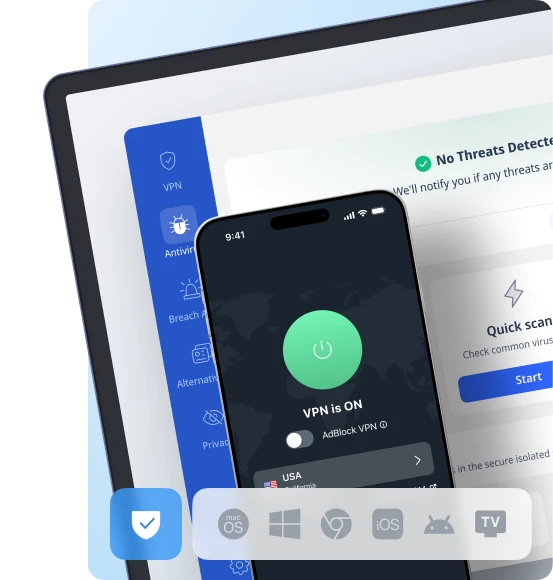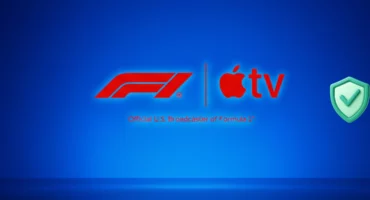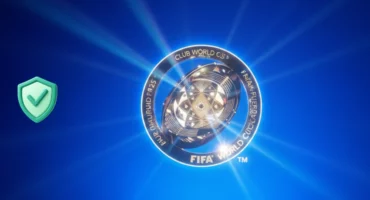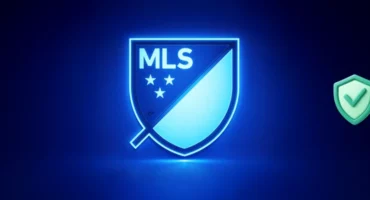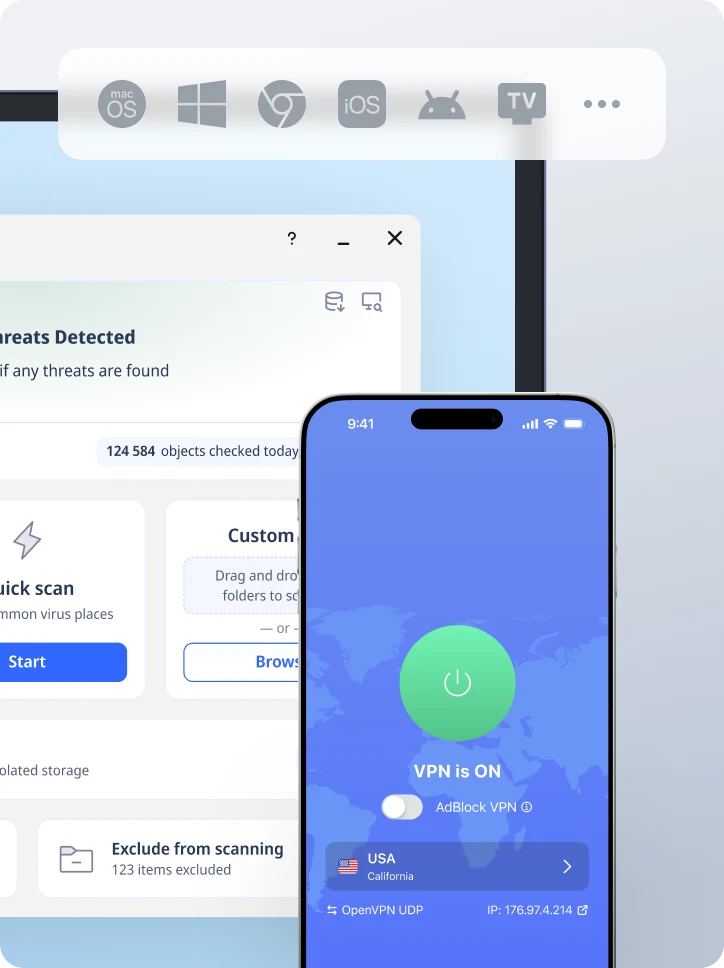Why is Chrome so slow? Here’s what’s really slowing you down
When Google Chrome starts crawling, it can turn the simplest task like opening email or reading the news into a mini patience test. You’re stuck watching a spinning circle while wondering if your Internet connection gave up on you or your computer just decided to nap. Let’s figure this out.
If you’ve ever thought, “Why is Chrome so slow?” then this guide will break it all down in a way that actually makes sense. No tech lingo. No guessing. Just simple fixes, common-sense tips, and a few steps to get your Chrome browser running like it has to be: fast, smooth, and stress-free. Finally, we’ll also tell how VeePN helps in this connection.

The root cause of why the Chrome is so slow
Before tweaking anything, let’s understand what might be dragging Chrome down. A slow browser isn’t always about Chrome itself. It can be your system resources, a bloated browsing history, outdated add ons, or even your operating system falling behind.
Ask yourself:
- Is Chrome the only thing acting up? If yes, the browser’s your problem.
- Is your whole computer sluggish? Then your RAM, CPU, or background apps could be draining your machine.
- Are some pages loading fine while others crawl? That might point to your Internet speed or Google’s servers.
Sometimes the issue is one thing. Sometimes it’s three. We’ll sort through all of it.
Check the Chrome’s task manager to find out what’s hogging resources
If Chrome feels heavy, it’s time to spy on what’s happening under the hood using Chrome’s Task Manager. This tool shows you which tabs or extensions are eating up memory or CPU.
Here’s how to open it:
- Launch Chrome and click the three-dot menu in the top right.
- Hover over More tools, then click on Task Manager.
- A new window will pop up with a list of every tab, extension, and background process Chrome is running.
- Now look at the “Memory footprint” and “CPU” columns. If one tab is using triple the memory of the others or an ad blocker is burning through the CPU, that’s a red flag.
- Click on any resource hog and hit the “End process” button.
This won’t delete the tab or extension. It just stops it from running. If a specific site keeps appearing as the problem, it may be overloaded with graphics intensive tasks, video ads, or broken scripts.
Close unused tabs and reduce memory load
Let’s be real, how many tabs are you currently browsing? The problem is that if it is beyond five, and you have not clicked half of them in hours, it is part of the problem. Each tab takes up significant memory, even when it’s not in use. So the more tabs you have open, the slower Chrome’s performance gets.
To fix it:
- Go through your tabs and ask yourself: “Do I need this open right now?”
- Bookmark important pages so you don’t lose them.
- Right-click on tabs and select “Close tabs to the right” to clean up in bulk.
- Lightweight tab suspender extension is another way you can use to pause tabs that have not been used in a long time.
This will provide your browser with some breathing space and scrolling and loading of pages will be far easier.
Disable unnecessary extensions and add-ons
Too many Chrome extensions means trouble. Even ones you’re not actively using might still run in the background.
To clean them up:
- Click the three dots in the top-right of Chrome.
- Go to More tools > Extensions.
- Look through the list and ask: “Do I really use this?”
If not, flip the switch to disable or click “Remove” to delete it entirely. Some old add-ons might be outdated or even unsafe, and they can seriously hurt Chrome’s performance.
Don’t know what is wrong? Disable all and then enable each one by one till you find the problem extension. It is only a few minutes but this might save you the hassle of having a lagging browser all the time.
Enable hardware acceleration (or disable it if it backfires)
Hardware acceleration will assist Chrome to employ your graphics card rather than your CPU to handle heavy items such as videos, animations or rendering of intricate websites. Theoretically, it accelerates it. However, in some configurations, particularly on older computers, it may do just the reverse.
To check or toggle it:
- Open Chrome Settings.
- Scroll down and click System on the left menu.
- Look for Use hardware acceleration when available.
- Turn it ON or OFF (depending on its current state), then restart Chrome.
If enabling hardware acceleration improves things — great. If Chrome slow issues get worse, switch it back.
Clear browsing data and reset junked-up settings
Chrome accumulates thousands of data behind the scenes over time: cached pictures, cookies, auto-fill forms, site preferences and so on. Although some of it is useful in loading pages more quickly, excess of it, or spoiled information, may break things.
Here’s how to clear data:
- Click the three dots and open “Settings.”
- Select “Privacy and Security.”
- Click “Clear browsing data.”
- Choose “All time” as the time range.
- Check “Cached images and files” and “Cookies and other site data,” then hit “Clear data.”
If Chrome still misbehaves, consider a full reset by going to Settings > Reset Settings > Restore settings to their original defaults.
If that doesn’t help, go all in and reinstall Chrome. Just export your bookmarks first.
Compare with other browsers to spot the difference
Still lagging? Try loading the same sites in Microsoft Edge or Firefox. If they feel snappier, it’s clearly Chrome that’s choking, not your device or connection.
Why this matters:
- It helps you avoid blaming the wrong thing.
- In case the other browsers work better, you may simply switch to Chrome when you need to do something and to another browser when it is important to be fast.
Other users have complained that Chrome performs poorly on older machines than other browsers, particularly with newer sites which are full of video, tracking scripts, or large JavaScript libraries.
Check your Internet speed and Wi-Fi
An obvious one, but even the cleanest browser can’t beat a bad Internet connection. Sometimes, page loading delays come from your Internet speed, not Chrome itself. So, check it out to know for sure.
Here’s how to check:
- Go to a site such as speedtest.net and check whether your speed matches what your Internet service provider promises.
- Restart your router or switch from Wi-Fi to Ethernet if possible.
- Try other devices to see if they’re slow too.
In case the problem is in your network, contact your ISP. Some providers throttle bandwidth during peak hours, especially for data-heavy apps like streaming or browsing. A VPN such as VeePN may be used to get around that, here is how.
Use VeePN to boost your Chrome performance
Google Chrome doesn’t just slow down because of your system. It slows down because of what it loads. Ads. Scripts. Trackers. ISP throttling. Public Wi-Fi interference. That’s where VeePN steps in.
🚀 Bypass ISP throttling
Some providers slow down specific apps. VeePN encrypts your traffic, so your ISP can’t tell you’re using Chrome or streaming video — meaning no artificial slowdowns.
🧹 Block ads and trackers
The web pages are faster to load without the burden of ad banners, autoplay videos, or tracking scripts by third parties. VeePN’s NetGuard feature prevents them at the source.
🌍 Optimize with global server network
VeePN’s 2,500+ servers in 89 countries help you connect through faster, less congested routes, speeding up Chrome’s performance for global sites.
🔐 Encrypt public Wi-Fi traffic
On airport or café Wi-Fi? VeePN keeps your data safe from eavesdroppers and reduces lag caused by insecure networks.
⚙️ Split tunneling for better performance
Use the VPN for Chrome only while letting other apps stay off it. That keeps your connection fast where it matters most.
📱 Multi-device coverage
Protect and optimize browsing on up to 10 devices like your laptop, phone, tablet, and more – all under one subscription.
💣 Kill Switch for continuous protection
In case your VPN glitches or fails, VeePN disconnects your Internet connection to prevent revealing your information or cause slowdowns.
🚨 Breach alerts
In case of a leak of your data during a breach, you will be informed quickly to change your passwords and prevent unnatural activity in Chrome.
📁 No-logs policy
VeePN keeps zero records of your browsing activity. Unlike some “free version” VPNs, there’s no data collection happening in the background.
Try using VeePN without risks, as we offer a 30-day money-back guarantee.
FAQ
✅ Clear your browsing history and cached files.
✅ Close unused tabs and suspend background tabs.
✅ Disable or remove heavy chrome extensions.
✅ Check Chrome’s Task Manager to spot what’s hogging resources.
✅ If needed, reinstall Chrome and test again.
Discover more ways in this article.
⚠️ You may have updated Chrome browser recently, and it’s clashing with old add-ons.
⚠️ Background scripts or bad websites could be draining your CPU usage.
⚠️ A data breach or suspicious login may be slowing your session (check with breach alerts).
⚠️ Your Internet connection might be fine, but you’re being throttled by your ISP.
Discover how to speed up Google Chrome in this article.
- Click the three-dot menu > Settings.
- Go to Privacy and Security > Clear browsing data.
- Choose “All time,” check “Cached images and files.”
- Hit “Clear data” to free up space and improve speed.
Discover how to speed up Google Chrome in this article.
- It’s likely Chrome slow issues from memory overload, not your Internet speed
- You might have too many open tabs, bloated chrome extensions, or tracking scripts running
- Try comparing with other browsers like Edge to confirm it’s a browser issue, not a network one.
Discover how to speed up Google Chrome in this article.
VeePN is freedom
Download VeePN Client for All Platforms
Enjoy a smooth VPN experience anywhere, anytime. No matter the device you have — phone or laptop, tablet or router — VeePN’s next-gen data protection and ultra-fast speeds will cover all of them.
Download for PC Download for Mac IOS and Android App
IOS and Android App
Want secure browsing while reading this?
See the difference for yourself - Try VeePN PRO for 3-days for $1, no risk, no pressure.
Start My $1 TrialThen VeePN PRO 1-year plan
